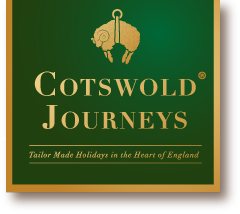The Saxons
The Saxons arrived from Germany in the fifth century – what exactly happened during this period is uncertain. The traditional view, that the Germanic tribes invaded, defeated the Britons and the Romano-Britons, and imposed their own ways on an unwilling native population, has been largely superseded by the notion that the invasion was a more gradual process of cohabitation and coexistence.
Nonetheless, fighting there was. In the Cotswolds, the major event at this period was the Battle of Dyrham, in AD 577 (known only from the Anglo-Saxon Chronicle, which gives few details but refers to Deorham, thought to be Dyrham (above) near Bath), following which Cealin, Saxon king of Wessex, took Cirencester, Gloucester and Bath. After a period of squabbling among the Saxons themselves, Cirencester then became the hub of an Anglo-Saxon kingdom under the aegis of the kingdom of Mercia. Several churches in the Cotswolds have Saxon elements. Two complete Saxon churches or chapels lie within or just outside the area (Odda’s Chapel at Deerhurst, on the River Severn, and St Laurence at Bradford on Avon). There are two other larger places with strong Saxon links. In AD 787 a monastery was founded by Offa, King of the Saxon kingdom of Mercia and the town of Winchcombe grew around it, eventually becoming a capital town of Mercia and briefly, the capital of its own ‘shire’, Winchcombeshire. Malmesbury, in Wiltshire, on the very edge of what can be described as the Cotswolds, is said to be the oldest borough in England, receiving its charter in AD 880 from King Alfred the Great. A hilltop town, it is dominated by the remains of the mighty 7th-century Benedictine Monastery built by Aldhelm, a nephew of King Ina of Wessex. From this abbey, by the way, flight?
The Middle Ages
Although they controlled other parts of the country, no significant impact was made by the Danes in the Cotswolds. The Normans, who famously defeated King Harold II at the Battle of Hastings in 1066, did not finally assert control over the Kingdom of Mercia, which included part of the Cotswolds, until 1070. From this time the Cotswolds, together with most of the rest of the country, settled into patterns of life uninterrupted by invasion for the following thousand years. On the subdivision of the Mercian diocese in 680 the greater part of modern Gloucestershire, the county that includes most of the Cotswolds, was included in the diocese of Worcester, and shortly after the Norman Conquest constituted the archdeaconry of Gloucester, which in 1290 comprised the deaneries of Campden, Stow, Cirencester, Fairford, Winchcombe, Stonehouse, Hawkesbury, Bitton, Bristol, Dursley, and Gloucester. In 1541 the Diocese of Gloucester was created, its boundaries being identical with those of the county. After the Conquest, very extensive lands and privileges in the county, and in the Cotswolds in general, were acquired by the church.


0 Comments